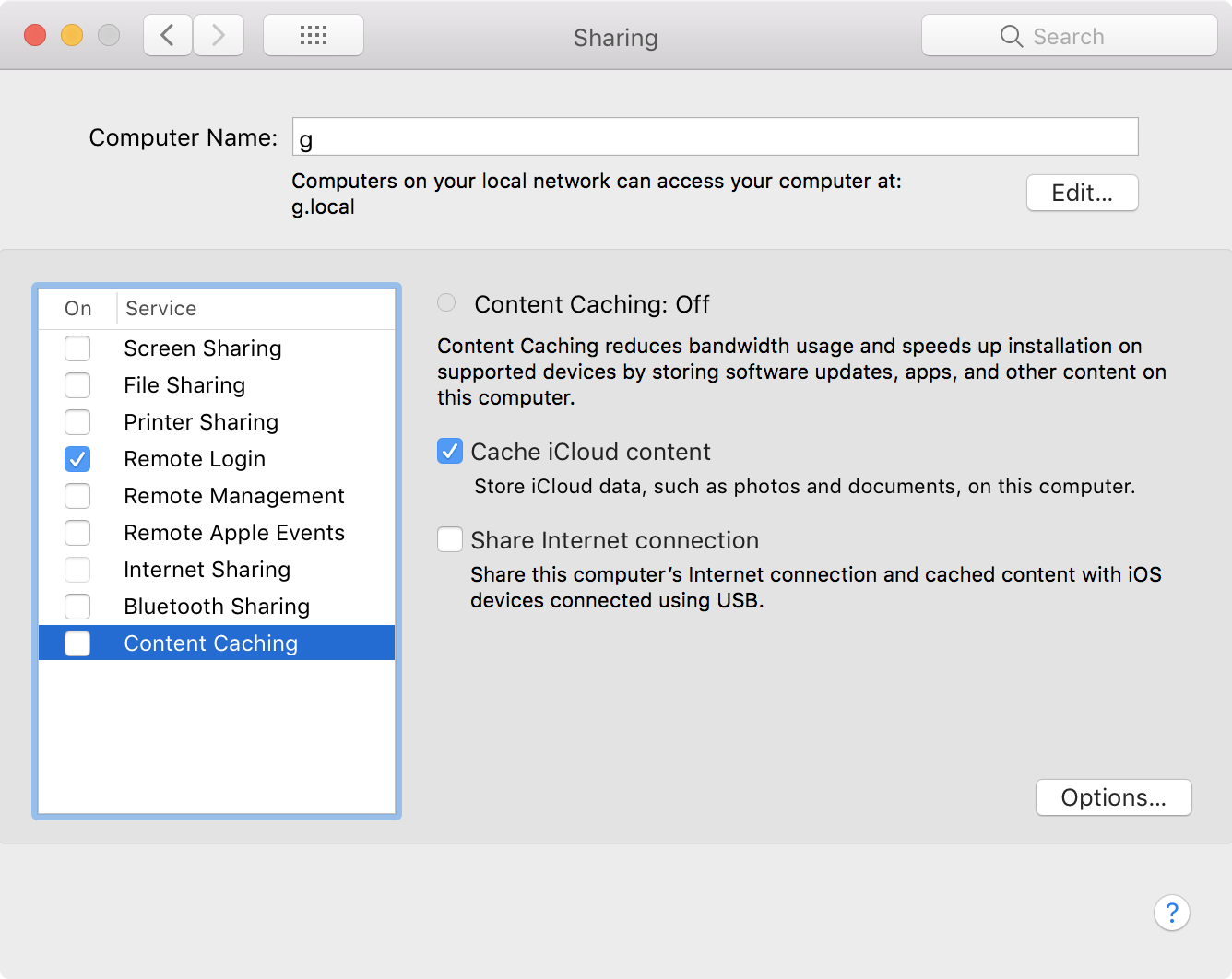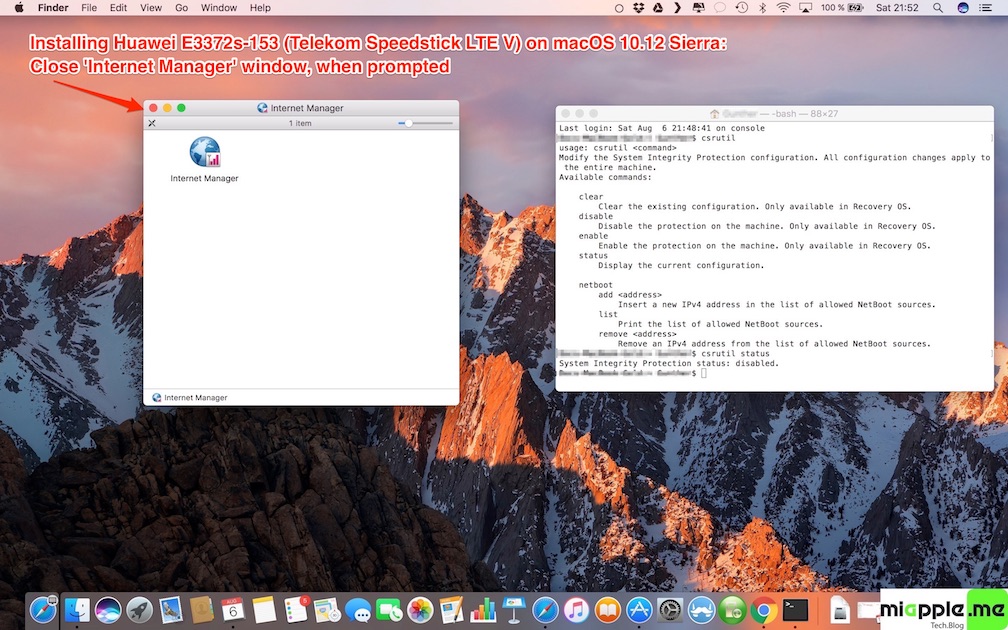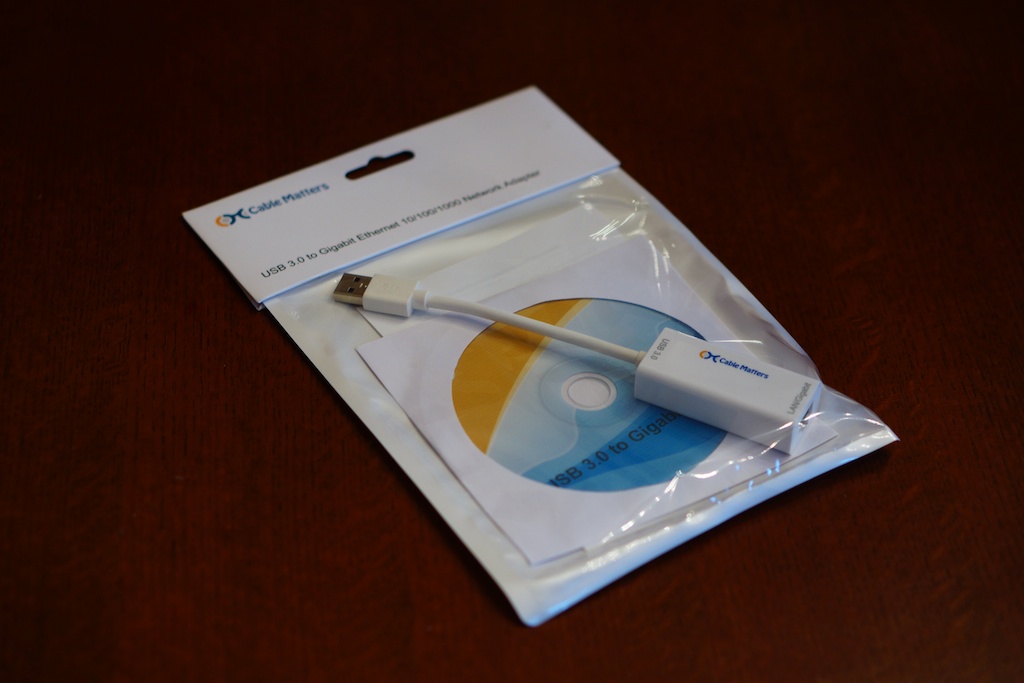These advanced steps are primarily for system administrators and others who are familiar with the command line. You don't need a bootable installer to upgrade macOS or reinstall macOS, but it can be useful when you want to install on multiple computers without downloading the installer each time.
- Mac Mojave
- Usb Ethernet For Mac High Sierra 10.12
- Mac Ethernet Driver
- Usb Ethernet For Mac High Sierra Download
- Macbook Usb Ethernet
- Ethernet Mac Controller
- Usb Ethernet Adapter Mac High Sierra
Use an Ethernet cable to connect your computer's Ethernet port to a modem or other network device. If you're using a network, cable modem, or DSL connection, you need to set Ethernet preferences. Configuring Mac OS X Snow Leopard to use an Ethernet connection is easy, once you collect the necessary information from your Internet Service Provider. To set up your Ethernet connection manually, follow these steps: Click the System Preferences icon. Use an Ethernet cable to connect your computer's Ethernet port to a modem or other network device (for example, a switch or a router). If your computer doesn't have an Ethernet port, try using a USB to Ethernet adapter, or a Thunderbolt to Gigabit Ethernet adapter. In many cases, you'll automatically connect to the internet.
What you need to create a bootable installer
- A USB flash drive or other secondary volume, formatted as Mac OS Extended, with at least 12GB of available storage
- A downloaded installer for macOS Big Sur, Catalina, Mojave, High Sierra, or El Capitan
Download macOS
- Download: macOS Big Sur, macOS Catalina, macOS Mojave, or macOS High Sierra
These download to your Applications folder as an app named Install macOS [version name]. If the installer opens after downloading, quit it without continuing installation. To get the correct installer, download from a Mac that is using macOS Sierra 10.12.5 or later, or El Capitan 10.11.6. Enterprise administrators, please download from Apple, not a locally hosted software-update server. - Download: OS X El Capitan
This downloads as a disk image named InstallMacOSX.dmg. On a Mac that is compatible with El Capitan, open the disk image and run the installer within, named InstallMacOSX.pkg. It installs an app named Install OS X El Capitan into your Applications folder. You will create the bootable installer from this app, not from the disk image or .pkg installer.
Use the 'createinstallmedia' command in Terminal
- Connect the USB flash drive or other volume that you're using for the bootable installer.
- Open Terminal, which is in the Utilities folder of your Applications folder.
- Type or paste one of the following commands in Terminal. These assume that the installer is in your Applications folder, and MyVolume is the name of the USB flash drive or other volume you're using. If it has a different name, replace
MyVolumein these commands with the name of your volume.
Big Sur:*
Catalina:*
Mojave:*

High Sierra:*
El Capitan:
* If your Mac is using macOS Sierra or earlier, include the --applicationpath argument and installer path, similar to the way this is done in the command for El Capitan.
After typing the command:
Mac Mojave
- Press Return to enter the command.
- When prompted, type your administrator password and press Return again. Terminal doesn't show any characters as you type your password.
- When prompted, type
Yto confirm that you want to erase the volume, then press Return. Terminal shows the progress as the volume is erased. - After the volume is erased, you may see an alert that Terminal would like to access files on a removable volume. Click OK to allow the copy to proceed.
- When Terminal says that it's done, the volume will have the same name as the installer you downloaded, such as Install macOS Big Sur. You can now quit Terminal and eject the volume.
Usb Ethernet For Mac High Sierra 10.12
Use the bootable installer
Determine whether you're using a Mac with Apple silicon, then follow the appropriate steps: Directx 12 download 64 bit.
Apple silicon
- Plug the bootable installer into a Mac that is connected to the internet and compatible with the version of macOS you're installing.
- Turn on your Mac and continue to hold the power button until you see the startup options window, which shows your bootable volumes and a gear icon labled Options.
- Select the volume containing the bootable installer, then click Continue.
- When the macOS installer opens, follow the onscreen instructions.
Intel processor
- Plug the bootable installer into a Mac that is connected to the internet and compatible with the version of macOS you're installing.
- Press and hold the Option (Alt) ⌥ key immediately after turning on or restarting your Mac.
- Release the Option key when you see a dark screen showing your bootable volumes.
- Select the volume containing the bootable installer. Then click the up arrow or press Return.
If you can't start up from the bootable installer, make sure that the External Boot setting in Startup Security Utility is set to allow booting from external media. - Choose your language, if prompted.
- Select Install macOS (or Install OS X) from the Utilities window, then click Continue and follow the onscreen instructions.
Learn more
For more information about the createinstallmedia command and the arguments that you can use with it, make sure that the macOS installer is in your Applications folder, then enter the appropriate path in Terminal:
- Big Sur: /Applications/Install macOS Big Sur.app/Contents/Resources/createinstallmedia
- Catalina: /Applications/Install macOS Catalina.app/Contents/Resources/createinstallmedia
- Mojave: /Applications/Install macOS Mojave.app/Contents/Resources/createinstallmedia
- High Sierra: /Applications/Install macOS High Sierra.app/Contents/Resources/createinstallmedia
- El Capitan: /Applications/Install OS X El Capitan.app/Contents/Resources/createinstallmedia
A bootable installer doesn't download macOS from the internet, but it does require an internet connection to get firmware and other information specific to the Mac model.
If anyone is still having problems seeing a USB to Ethernet connection in Network settings, here's what worked for me.
Mac Ethernet Driver
1. I'm using the Apple dongle, USB to Ethernet. OS is High Sierra 13.13.4
2. Could not see the connection in network settings.
3. When you plug in the dongle, go to the menu bar, and click on About this Mac. Choose System Report. Scroll down to the USB section. You should see AX88772 (it's important that the dongle is plugged into the USB port on the MB). I think that's what the dongle wants in terms of the driver, which for some reason seems to have been broken in this iteration of OS.
Usb Ethernet For Mac High Sierra Download
4. Go to the ASIX website and download the driver for AX88772. I used the latest version 2.6.0

Macbook Usb Ethernet
5. Install the package. The machine may give you a message saying your security preferences are blocking it. Just go to security preferences and tell it to allow installation.
6. The machine will ask to restart. Restart it.
7. Go to network settings. You should now see the option for the USB to Ethernet connection. Connect your Ethernet cable to the dongle, and you should be in business.
Ethernet Mac Controller
Hope this helps. Just wasted 5 hours of my life over a few days trying to figure this out, and add in two hours with the ever polite, but in this case unhelpful Apple support people.
Usb Ethernet Adapter Mac High Sierra
MacBook Pro, macOS High Sierra (10.13.4), USB to Ethernet Issues

High Sierra:*
El Capitan:
* If your Mac is using macOS Sierra or earlier, include the --applicationpath argument and installer path, similar to the way this is done in the command for El Capitan.
After typing the command:
Mac Mojave
- Press Return to enter the command.
- When prompted, type your administrator password and press Return again. Terminal doesn't show any characters as you type your password.
- When prompted, type
Yto confirm that you want to erase the volume, then press Return. Terminal shows the progress as the volume is erased. - After the volume is erased, you may see an alert that Terminal would like to access files on a removable volume. Click OK to allow the copy to proceed.
- When Terminal says that it's done, the volume will have the same name as the installer you downloaded, such as Install macOS Big Sur. You can now quit Terminal and eject the volume.
Usb Ethernet For Mac High Sierra 10.12
Use the bootable installer
Determine whether you're using a Mac with Apple silicon, then follow the appropriate steps: Directx 12 download 64 bit.
Apple silicon
- Plug the bootable installer into a Mac that is connected to the internet and compatible with the version of macOS you're installing.
- Turn on your Mac and continue to hold the power button until you see the startup options window, which shows your bootable volumes and a gear icon labled Options.
- Select the volume containing the bootable installer, then click Continue.
- When the macOS installer opens, follow the onscreen instructions.
Intel processor
- Plug the bootable installer into a Mac that is connected to the internet and compatible with the version of macOS you're installing.
- Press and hold the Option (Alt) ⌥ key immediately after turning on or restarting your Mac.
- Release the Option key when you see a dark screen showing your bootable volumes.
- Select the volume containing the bootable installer. Then click the up arrow or press Return.
If you can't start up from the bootable installer, make sure that the External Boot setting in Startup Security Utility is set to allow booting from external media. - Choose your language, if prompted.
- Select Install macOS (or Install OS X) from the Utilities window, then click Continue and follow the onscreen instructions.
Learn more
For more information about the createinstallmedia command and the arguments that you can use with it, make sure that the macOS installer is in your Applications folder, then enter the appropriate path in Terminal:
- Big Sur: /Applications/Install macOS Big Sur.app/Contents/Resources/createinstallmedia
- Catalina: /Applications/Install macOS Catalina.app/Contents/Resources/createinstallmedia
- Mojave: /Applications/Install macOS Mojave.app/Contents/Resources/createinstallmedia
- High Sierra: /Applications/Install macOS High Sierra.app/Contents/Resources/createinstallmedia
- El Capitan: /Applications/Install OS X El Capitan.app/Contents/Resources/createinstallmedia
A bootable installer doesn't download macOS from the internet, but it does require an internet connection to get firmware and other information specific to the Mac model.
If anyone is still having problems seeing a USB to Ethernet connection in Network settings, here's what worked for me.
Mac Ethernet Driver
1. I'm using the Apple dongle, USB to Ethernet. OS is High Sierra 13.13.4
2. Could not see the connection in network settings.
3. When you plug in the dongle, go to the menu bar, and click on About this Mac. Choose System Report. Scroll down to the USB section. You should see AX88772 (it's important that the dongle is plugged into the USB port on the MB). I think that's what the dongle wants in terms of the driver, which for some reason seems to have been broken in this iteration of OS.
Usb Ethernet For Mac High Sierra Download
4. Go to the ASIX website and download the driver for AX88772. I used the latest version 2.6.0
Macbook Usb Ethernet
5. Install the package. The machine may give you a message saying your security preferences are blocking it. Just go to security preferences and tell it to allow installation.
6. The machine will ask to restart. Restart it.
7. Go to network settings. You should now see the option for the USB to Ethernet connection. Connect your Ethernet cable to the dongle, and you should be in business.
Ethernet Mac Controller
Hope this helps. Just wasted 5 hours of my life over a few days trying to figure this out, and add in two hours with the ever polite, but in this case unhelpful Apple support people.
Usb Ethernet Adapter Mac High Sierra
MacBook Pro, macOS High Sierra (10.13.4), USB to Ethernet Issues
Posted on May 2, 2018 8:33 AM
